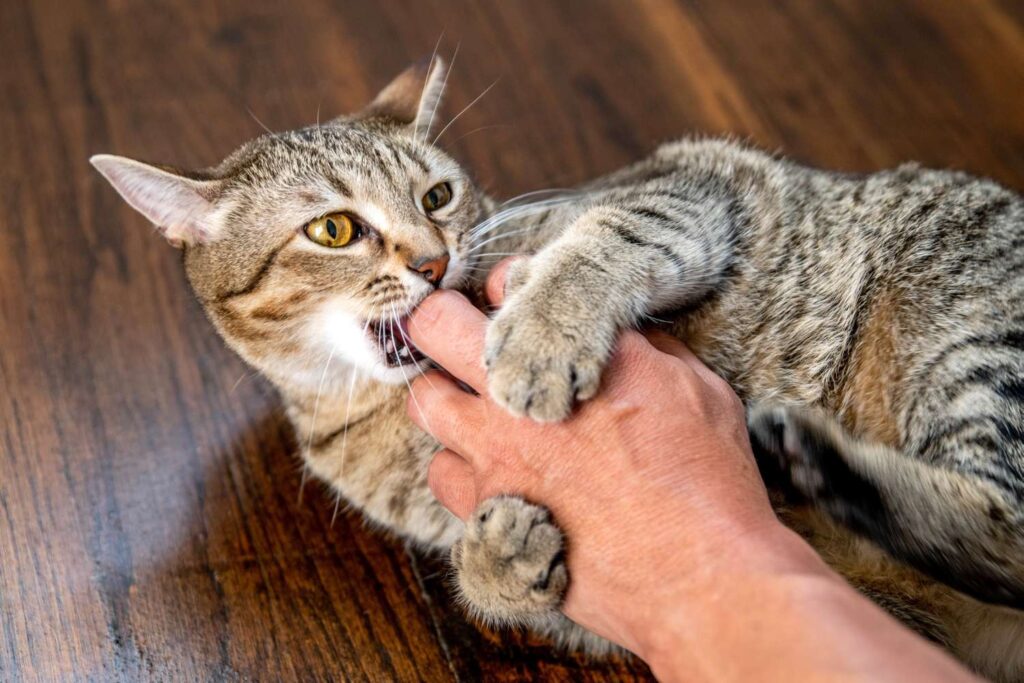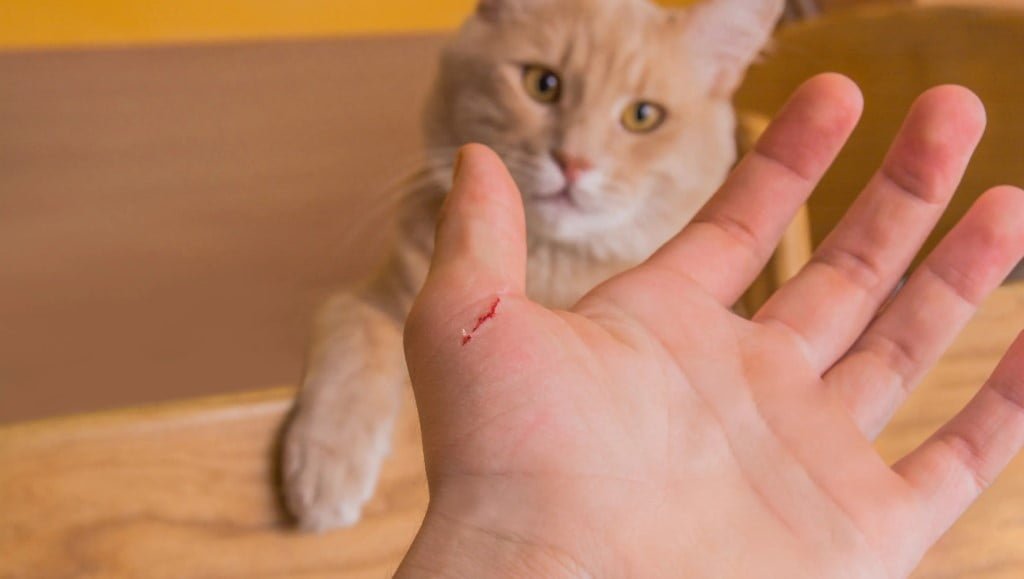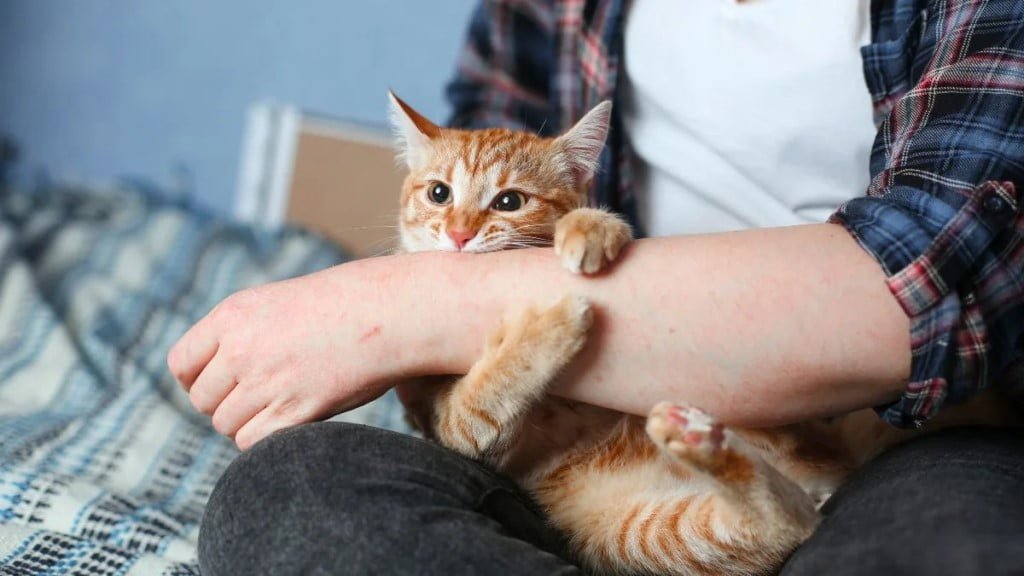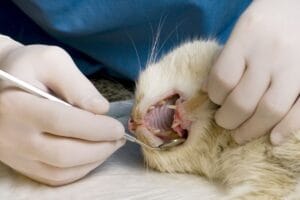Scratched by a Cat? Here’s What You Need to Do

Being a cat owner can not only be stressful but also physically harmful. While cats may be known for their independent personalities and playfulness, they can at times get aggressive. They might claw or scratch you out in a fit of excitement or random aggression. Here’s what you need to do if you get scratched by a cat.
A cat scratch is nothing to worry about, however, if you are not careful and don’t take the precautions listed in this guide, then you may find yourself in trouble. Therefore, it’s important to take proper care of the wound to prevent infection and promote healing. In this guide, we will discuss what you need to do if you’re scratched by a cat and what steps you can take to prevent future incidents.
Potential Hazards of Cat Scratches

While interacting with your feline companion, cat scratches are an inherent part of the experience. Particularly in the case of kittens, playful moments and learning about their own movements can sometimes result in scratches during playtime or cuddles. However, cat scratches should not be taken lightly, as they can pose potential hazards to both you and your cat.
Cat scratches can cause pain, bleeding, and even lead to infection. Moreover, it’s important to note that cats, whether feral or domesticated, have the potential to transmit various viruses and bacteria through their scratches. Some of the health complications that may arise from cat scratches include:
- Cat-scratch Fever: This bacterial infection, also known as cat-scratch disease, is caused by the bacterium Bartonella henselae. It typically manifests as swollen lymph nodes near the site of the scratch, along with flu-like symptoms such as fever, fatigue, and body aches.
- Tetanus: Tetanus is a potentially serious bacterial infection that can be contracted through deep puncture wounds or contaminated scratches. The bacterium Clostridium tetani produces toxins that affect the nervous system, leading to muscle stiffness and spasms.
- Rabies: Although rare, cat scratches can transmit the rabies virus if the cat is infected. Rabies is a viral disease that affects the central nervous system and can be fatal if left untreated. It is essential to ensure that your cat is up to date on their rabies vaccinations.
To minimize the risk of cat scratches, it’s important to handle and interact with your cat gently, avoiding behaviors that may trigger defensive reactions. Regular nail trims, scratching posts, and interactive playtime can also help redirect your cat’s natural instinct to scratch. In the event of a scratch, it is crucial to thoroughly clean the wound with mild soap and water, and consult a healthcare professional if there are any concerns about infection or other potential complications.
Assessing the Wound

When it comes to treating a cat scratch, it is essential to assess the wound promptly. A scratch that breaks the skin and causes bleeding is classified as a puncture wound and should be treated accordingly. Here are some pointers to keep in mind when assessing the wound:
- Check for signs of infection: Look for redness, swelling, warmth, and the presence of discharge. These are indicators that the wound may be infected, and it is crucial to seek professional medical attention in such cases.
- Clean the area: Gently clean the area surrounding the scratch with mild soap and water. This will help remove any debris or surface contaminants that might interfere with the evaluation.
- Look for deep penetration: Carefully observe the wound for any signs of deep penetration or foreign objects embedded within. If you notice any foreign material, such as a splinter or debris, do not attempt to remove it yourself as this may cause further damage. Seek veterinary assistance to ensure safe and appropriate removal.
- Monitor for changes: Even if the wound appears superficial initially, it is important to monitor it closely for any signs of worsening or infection over time. Keep an eye out for increased redness, swelling, or the presence of pus.
- Seek professional guidance: If you notice any changes or are uncertain about the severity of the wound, it is always advisable to consult a healthcare professional or your veterinarian for further evaluation and guidance. They can assess the wound more accurately and recommend appropriate treatment options.
By following these pointers, you can effectively assess the cat scratch wound and determine the necessary steps to ensure proper care and healing.
Clean the Wound

Once you have assessed the cat scratch wound, the next crucial step is to clean it properly. Follow these guidelines for effective wound cleaning:
- Use clean water and mild soap: Clean the wound gently with clean water and mild soap. This helps to remove any dirt or debris that might be present. Avoid using hydrogen peroxide or alcohol, as they can damage the tissue and slow down the healing process.
- Pat dry the area: After cleaning the wound, carefully pat the area dry with a clean towel. Make sure to use a gentle touch to avoid causing any additional discomfort or irritation.
- Apply antibiotic ointment: Once the wound is clean and dry, apply a thin layer of antibiotic ointment to the affected area. This helps to prevent infection and promotes healing. Be sure to follow the instructions on the ointment packaging for proper application.
- Cover with a bandage: After applying the antibiotic ointment, cover the wound with a sterile bandage or dressing. This helps to keep the wound clean and protected from external contaminants. Change the bandage regularly, following the recommended frequency and instructions.
By following these steps, you can ensure that the cat scratch wound is properly cleaned, protected, and given the best chance to heal without complications. Remember to always consult a healthcare professional or veterinarian if you have any concerns or if the wound does not show signs of improvement.
Monitor the Wound

After treating the cat scratch wound, it is crucial to monitor its progress and watch for any signs of complications. Here are some words of advice on how to effectively monitor the wound:
- Be vigilant for signs of infection: Keep a close eye on the wound for any signs of infection, such as increasing redness, swelling, warmth, or the presence of pus. If you observe any of these signs, it is important to seek medical attention promptly.
- Check the bandage regularly: Monitor the condition of the bandage covering the wound. If it becomes dirty, wet, or starts to loosen, it should be changed immediately. A clean and well-fitting bandage helps maintain cleanliness and protects the wound.
- Observe your cat’s behavior: Pay attention to your cat’s behavior and look for any changes that may indicate discomfort or pain related to the wound. If your cat appears excessively bothered by the wound, excessively licking or scratching the area, or shows signs of discomfort, consult with your veterinarian.
By diligently monitoring the cat scratch wound and promptly addressing any concerning signs or issues, you can ensure that the wound heals properly and minimize the risk of complications. Remember, if you have any doubts or concerns about the healing process, it is always best to seek professional guidance from your veterinarian.
Cat Scratch Fever
Cat-Scratch Fever, also known as cat-scratch disease, is a bacterial infection that can be transmitted to humans through cat scratches or bites. It is important to be aware of the symptoms associated with cat-scratch fever. Here is some further information on the symptoms:
- Redness, discoloration, and swelling of the scratch or bite site: The area where the cat scratch or bite occurred may become inflamed, with redness, discoloration, and swelling present. This can be an indication of an infection developing at the site.
- Fever, aches, and other flu-like symptoms: Cat-scratch fever can cause general flu-like symptoms, including fever, body aches, fatigue, and headache. These symptoms may resemble those of a mild case of the flu.
- Rashes on the body: Some individuals with cat-scratch fever may develop rashes on various parts of the body. These rashes can appear as small red bumps or raised lesions.
- Swelling of the lymph nodes: One characteristic symptom of cat-scratch fever is the swelling of lymph nodes near the scratch or bite site. The lymph nodes may become tender and painful to touch.
- Excessive fatigue and weakness: Cat-scratch fever can also cause persistent fatigue and weakness, which may persist for several weeks.
If you suspect you have cat-scratch fever or experience any of these symptoms after a cat scratch or bite, it is crucial to seek medical attention for proper diagnosis and treatment.
Treatment of Cat-Scratch Fever

Treatment of Cat-Scratch Fever typically involves a combination of antibiotics and at-home wound care. Antibiotics, such as azithromycin or doxycycline, are commonly prescribed to combat the bacterial infection and reduce the severity of symptoms. The duration of antibiotic treatment varies depending on the severity of the infection and individual factors.
In addition to antibiotics, at-home wound care is crucial to alleviate symptoms and promote healing. This includes keeping the affected area clean and applying warm compresses to reduce swelling and discomfort. Over-the-counter pain relievers can be used to manage pain and fever associated with cat-scratch fever, under the guidance of a healthcare professional.
If you suspect you have cat-scratch fever or have been scratched or bitten by a cat and are experiencing symptoms of infection, it is important to seek medical attention. The healthcare provider will assess your symptoms, conduct necessary tests, and determine the most appropriate treatment plan.
To prevent cat-scratch fever, it is advisable to take preventive measures such as avoiding rough play with cats, especially kittens, keeping cats’ nails trimmed, and practicing good hygiene by washing hands thoroughly after handling cats or cleaning litter boxes.
Preventing Future Scratches
To prevent future scratches, it’s crucial to create a safe and harmonious environment for both you and your cat. Understanding your cat’s behavior and body language is key. Pay attention to warning signs, such as tail twitching or ear flattening, which may indicate agitation or potential aggression. By recognizing these signs, you can take steps to avoid situations that could lead to scratches.
In addition to being aware of your cat’s behavior, here are some practical tips to prevent future scratches:
- Trim your cat’s claws regularly using cat-specific clippers. If you’re unsure about how to trim their claws safely, consult a professional groomer or veterinarian who can assist you.
- Provide your cat with suitable scratching posts and surfaces. This allows them to engage in their natural scratching behavior without resorting to scratching you or your furniture. Make sure the scratching posts are tall enough for your cat to fully stretch out and sturdy enough to withstand their scratching.
- Establish boundaries and territory management. Create separate spaces for your cat during social events or when introducing new people or animals into the household. This reduces the likelihood of territorial behavior and potential scratches.
- Seek professional guidance if your cat displays aggression towards you or others. A behaviorist or veterinarian can help assess the underlying causes of aggression and provide effective strategies for managing it.
Remember, each cat is unique, and it may take time and patience to understand and address their individual needs. By implementing these preventative measures, you can foster a safe and enjoyable environment for both you and your feline companion.
Conclusion

In conclusion, if you’re scratched by a cat and it draws blood, it’s important to take proper care of the wound to prevent infection and promote healing. Keep an eye out for signs of infection and seek medical attention if necessary.
To prevent future scratches, be aware of your cat’s behavior, keep their claws trimmed, provide them with appropriate scratching surfaces, and respect their territorial nature. With these tips in mind, you can reduce the risk of being scratched by a cat and enjoy a happy and healthy relationship with your feline friend.
Remember, cats are animals, and it’s important to treat them with respect and patience. With proper care and understanding, you can have a loving and safe relationship with your cat.


